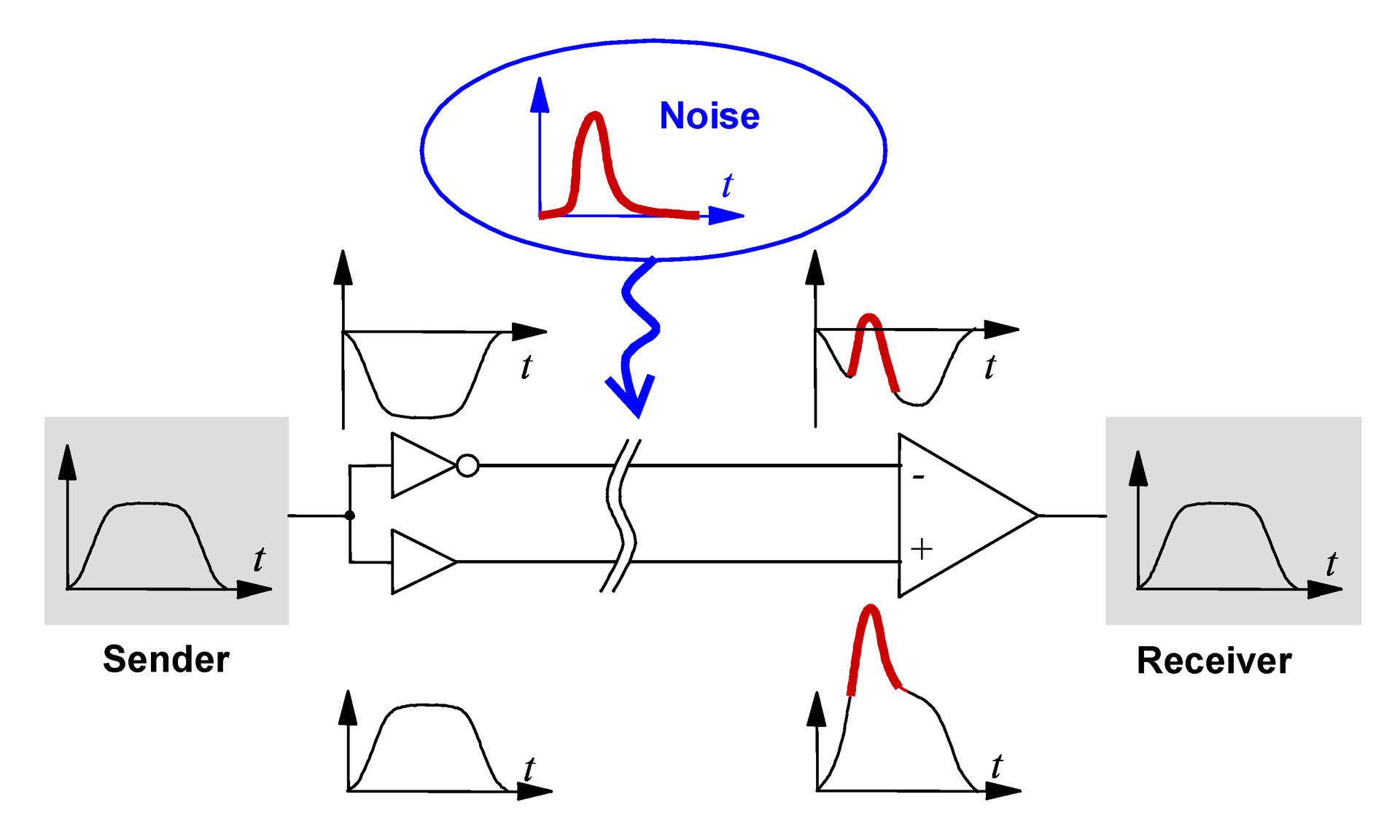sapphire_2010
Member level 5

What is the main reason of higher data rates in differential signaling as compare to single ended signaling?
Follow along with the video below to see how to install our site as a web app on your home screen.
Note: This feature may not be available in some browsers.



I don't think that's true. There's capacitance in the line regardless. Differential signaling is faster because, generally, the voltage levels are lower, e.g. LVDS, and because the required bandwidth for differential signaling is less than comparable single-ended signals.Tline appears resistive plus delay while single ended appears capacitive to the driver (and this ruins risetime @ RX).

For low frequency it looks capacitive.I don't think that's true. There's capacitance in the line regardless.
to add some details:Differential signaling is faster because, generally, the voltage levels are lower,




